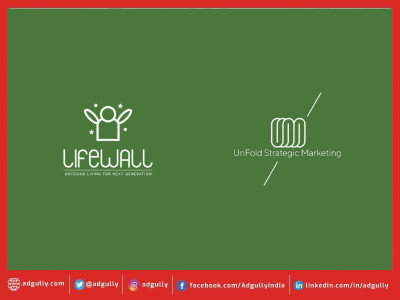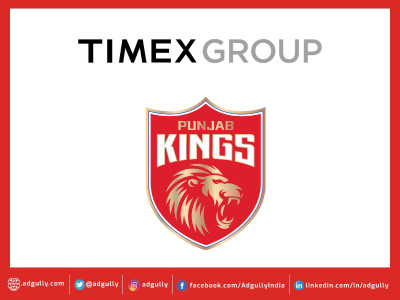Direct selling contributes to 80% of Tupperware’s revenues in India: Deepak Chhabra
Tupperware is an internationally renowned and loved homeware and kitchenware brand which has been present in India for over two decades. The brand entered India in 1996 and in less than a decade, it became a household name. With its best-in-class training and upskilling programmes, the brand created a network of over 1.5 million strong and confident direct seller women, who are till date driving the brand relentlessly to success. Tupperware takes pride in ‘Making in India’ since its inception and has a world-class manufacturing plant in Dehradun. The brand has kept pace with the changing times and evolved its marketing and sales strategies to enter the retail and e-tail space in India recently.
GAMEXX Awards 2021 Early Bird Discount Extended Last Date - Wednesday, June 30, 2021 - ENTER NOW
From a strong advocate of brick & mortar stores, the company sincerely believes that the retail model will always remain powerful and stay relevant, in spite of the proliferation of e-commerce business. Tupperware made a significant business announcement in August 2019, undertook a strategic transformation, and rolled out a multi-channel sales strategy to increase the addressable market and expand its footprint both geographically and digitally. This digital push was further strengthened after the pandemic hit in 2020. This is where Tupperware was met with operational challenges as face-to-face interactions were absolutely out of the question. It was then that the brand introduced measures like social selling to empower its direct sellers across the country. The brand has also invested in igniting global communities, especially women, to realise their best selves through opportunity, enrichment, celebration, and above all else, uplifting relationships.
In a freewheeling conversation with Adgully, Deepak Chhabra, Managing Director, Tupperware India, speaks about how their company overcame the various challenges and has navigated through the pandemic times. He also shares the overall ambitious plans of the company has and their growth strategy for the next 3 years.
Tupperware India was one of the first pioneers to enter direct selling in India almost two decades back. How has your journey been so far, and what are some of the challenges that the brand faced?
India is culturally connected, and Tupperware’s direct selling model has retained strong interpersonal bonds over the last 25 years across regions in the country. Tupperware’s brand awareness, love and loyalty levels among people are incredibly high. One reason for such admiration is the brand’s foundation based on genuine relationships nurtured by Tupperware distributors over the years.
As the market evolved in the past few years, consumers became more modern and pressed for time, resulting in a higher preference for convenience over personalisation. Hence, Tupperware’s evolution became inevitable, and the brand changed its sales model to include more channels to its fold. Tupperware made a significant business announcement in August 2019, undertook a strategic transformation, and rolled out a multi-channel sales strategy to increase the addressable market and expand its footprint both geographically and digitally.
This digital push was further strengthened after the pandemic hit us in 2020 when Tupperware was met with operational challenges as face to face interactions were absolutely out of the question. It was then that the brand introduced measures like social selling to empower its direct sellers across the country. The brand has also invested in igniting global communities, especially women, to realise their best selves through opportunity, enrichment, celebration, and above all else, uplifting relationships.
The company, in the past 25 years, has reached various milestones:
- Through its innovative and future-oriented approach, Tupperware has empowered more than 1.5 million women across India to date
- Multi-channel approach - Traditionally a direct selling brand, Tupperware embraced a multi-channel sales approach in 2019 and adopted digital transformation post-COVID-19, including Social Selling. Itbecame the first direct selling brand to introduce Social Selling to its direct seller ecosystem. The brand has ventured into retail stores, webstore and marketplaces
- HomeShops, Retail at Home is a new business model to empower women to support them during challenging times in the post-pandemic economy. We have created a new channel which is a hybrid of direct selling & stores, and Smart Sellers can retail from the comfort of their home
- In terms of geographies, Tupperware today has 92 physical stores in 56 cities across the length and breadth of the country. Tupperware continues the winning streak by adding more stores with a target to reach over 35 million households in 2022
- Going beyond the kitchen - Tupperware has been able to see growth in its wide range of kitchenware solutions across prepping, cooking, serving and storage range
- Direct selling continues to be the core business channel while the brand continues to expand across newer channels
The pandemic has disrupted almost every industry. How did it impact your company and business, and what was the approach adopted to navigate during these tough times?
With the outbreak of COVID-19 in 2020, businesses across industries took a hit, and Tupperware was no different. As people stayed home and managed household chores themselves, the demand for bulk storage witnessed a significant surge. People started buying more, and their appreciation for Tupperware rose as they experienced the brand first hand. This became a blessing in disguise for us.
When the second wave hit India in April this year, we were better prepared, and corporates across the country showed better agility. While there was a lockdown and physical stores were shut, face-to-face interactions were no longer an option once again. Tupperware maintained operational agility via its robust digital presence.
Even in 2020, unlike many businesses which reduced/ retracted retail presence, Tupperware launched new exclusive brand stores across cities in India. To accelerate business, a multi-channel marketing festival, TupperFest, was strategically launched in August 2020, which will see the second edition next month in August 2021 as the brand is confident of a continuous uptick in the consumption pattern since the newly debuted chef audience will shop more to experiment and upscale their newfound cooking talents in future as well. To manage the surge in orders and timely delivery of products, Tupperware also partnered with Swiggy Genie and Dunzo to home deliver products to the consumers from stores across 32 markets. Adopting various channels to stay closer to the consumer, we did the following:
Social selling: Tupperware India launched a Social Selling channel via a newly launched exclusive webstore. With the launch of social selling as a sales channel, we brought our direct sellers on a digital platform. We are giving them the tools to interact digitally on social media like Facebook, Instagram, WhatsApp, video platforms, etc. Every direct seller (DS) gets an URL, which they can circulate among their peer group on social media. Once clicked, the URL takes buyers to the company's web store. This way, our sales force gets continuity of business without going out physically.
Launch of webstore: In line with the brand’s multi-channel sales approach, webstore enabled the listing of the entire range of Tupperware products, along with product utility and demonstration videos.
Multi-channel retailing: We have also adopted multi-channel retailing to offer our consumers ease of operations with seamless movement and transaction across platforms. The consumer can buy products from any store/ webstore and exchange/ return them store present at any location and more.
Endless Aisle: Tupperware has a massive product range, and stocking and showcasing the entire product portfolio under one roof is impossible. Therefore, we introduced digital kiosks, enabling consumers to browse, experience and order products at our stores virtually.
Your business partners are your biggest asset to promote your brand. How did you engage with them during the pandemic, and what modus operandi deployed to reach your products to your end customers?
Committed to providing employment opportunities even when India was faced with joblessness, Tupperware pivoted its on-ground strategy not just to meet customer demand through digital innovations but also to bolster the job market time. We added 20% of the total consultant strength in October 2020 alone when the situation was still quite grim. Tupperware also upskilled its 70,000 direct sellers with technology-enabled virtual solutions to encourage them to adopt social selling. All of this was adopted within a few days. The brand has also turned millions of Indian women into financially independent entrepreneurs and focuses on boosting entrepreneurship among women in India. Today, direct selling continues to be the major contributor and the core channel for the company, with 80% of revenues coming from it.
In addition to the new platforms mentioned above, Tupperware also introduced Home Shops or Retail at Home – it is a new business model to empower these women further to support them in these challenging times. We have created a new channel which is a hybrid of direct selling & store channel where they can retail from the comfort of their home.
And as the brand continues to bring in newer innovations, we hope to empower the youth further through various job opportunities going forward. While 2020 gave a fillip to direct selling, this trend is expected to grow by leaps and bounds in the coming years.
What is the kind of reach you have today, and how deep have you penetrated in the various markets in India?
We are present across the country today, both physically and virtually. While our Direct Sellers cover more than 200 cities and towns, we also have 92 stores across 56 cities in India. 40% of these stores are in Ttier-1 cities. Depending on the COVID-19 situation here, the brand plans to take the total count to 140 by the end of 2021. Additionally, through our online presence, we cater to more than 10,000 pin codes.
You are planning to enter some new categories like glass, steel, porcelain, and melamine. What would be your strategy here to urge people to buy your brand and what kind of differentiation you are offering?
Tupperware is a one-stop shop for kitchen solutions across cooking, serving, prepping and storing range. Tupperware launched products across the glass, steel, porcelain, and melamine in India by adopting a material agnostic approach. Tupperware has constantly been innovating and experimenting with its product offerings for the last 25 years in India and 75 years globally. The brand differentiates from competition at each step and focuses on products, customers, ecosystem, partners and stakeholders alike. Some of our differentiators are:
Customer centricity: Our products help to directly make our customers lives better organised and simpler every day
Magical products: With products and recipes that colour your kitchen and experiences that brighten your life, we infuse every day with a spark of joy.
Efficiency in the kitchen and outside: Tupperware products help customers in the kitchen by saving time, energy and effort and also organise their kitchens along with their lives better with solutions for better health and a better environment
Choose good every day with Tupperware: We bring a sense of doing the right thing to every day. We help you eat healthier, take better care of your loved ones, support your community and do right by the planet
Nurturing: We empathise and are eager to share our experience and thoughtful solutions. We face environmental challenges together, and we contribute ideas and solutions for each of us to change our behaviour for the good of our planet.
The digital transformation has pushed brands to move to e-commerce. Have you also seen the shift happening towards online buying for your products?
Considering the massive potential of e-commerce, Tupperware had introduced its webstore and e-tail presence across various portals. Today, consumers, especially millennials, opt for the most convenient shopping methods without having to step out. And e-commerce offers them that advantage with ease of shopping that consists of easy returns, refunds and exchange, which is a key advantage of the channel. And this helps Tupperware stay closer to the customer and bring newer ones to the fold.
What's going to be your strategy to grow in these times for the next 3 years? What kind of growth drivers you are looking at, and how do you plan to engage with your target?
- We are pretty bullish on continually expanding our presence across the country.
- We are planning to take our physical stores in India to 500 over the next 3 years.
- We have plans to widen our Direct Sellers network to 1,50,000 by offering them various business options.
- We will also continue to expand our business within new channels and categories to reach new audiences who are looking for Tupperware
- Recruiting, retention & serving better will be of paramount importance to help our Salesforce nurture a better future for themselves, their families and the community
- Aim will be to empower more women and change as many lives as possible by introducing the Tupperware opportunity.
- Over the next 2-3 years, our key focus will be to increase Brand access and provide consumers with innovative and efficient solutions for their kitchens and homes.
















Share
Facebook
YouTube
Tweet
Twitter
LinkedIn